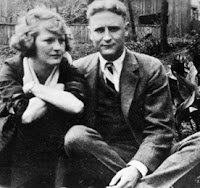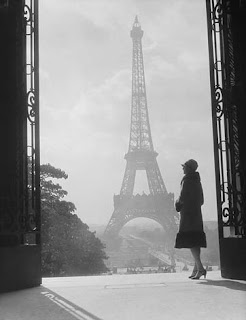Far to Go: Coney Island Part I
Today's post is going to be about the infamous Coney Island of New York City. Now, I'm a big circus and carnival history buff, so my knowledge of Coney Island before researching for this post was based on only that aspect of the amusement park. And, my trip to New York at the end of September will be my first time actually visiting Coney Island, so I am by no means an expert on the theme park. But I've been doing my homework in anticipation for the visit, and there's some fascinating things I wanted to share.
Coney Island's history is a long and rich one, going back to the early beginnings of Manhattan in the late 1800s (most of the populated portion of New York City was called Manhattan at that time). Being the only beach in a city that would soon reach a population greater than it had places to house them, it became an escape from poor and gritty urban life, and was gaining popularity as quick as the people were flocking to the city. In the 1870s is when things really started to get rolling. It started with vendors who saw the beach as an opportunity. Not surprisingly, builders and investors started to take notice. Coney Island became home to three different theme parks - SteepleChase, Luna Park, and DreamLand. All were in competition to outdo each other in lights, technological advancements, and oddities. Natural law was frowned upon. What was sought after (and more importantly for the theme park owners, what drew in more money) was gravity-defying coasters, technological advances such as Edison's incandescent lights, and especially human 'deformity' or what appeared to Americans as primitive, uncivilized, perverse, and disfigured. The reasoning behind this surge of interest in the abnormal and defiant is simple - the late 1800s and the early 1900s was an era of population growth, poverty, and stagnation. Children were being born every minute of every day, faster than people were dying. And there was an influx of immigration, too. In 1860 1 in 4 people living in New York were Irish-born, having immigrated after the Great Irish Famine. There were too many mouths to feed. Nobody could afford to travel, nor were there convenient and cheap modes of travel at people's fingertips like there is today. A place within walking distance that had a sandy beach, cheap food, and cheaper thrills was a much needed escape, and escape they did. People began to call Coney Island 'the poor man's Riviera'. Most of the people who flocked to the Island had limited knowledge of other cultures, races, animals, and technological advancements. For people who couldn't travel, Coney Island brought far-away lands right to their door. It is hard for us to imagine, because even if we go see an exhibit we've never laid eyes on before, chances are we've seen it (or something like it) on television or we've read about it in books. But imagine having the opportunity to see something you've never heard of, never encountered through any means, not even through word-of-mouth. Tempting, isn't it? This was the irresistible draw to Coney Island. It fascinated, it freaked, and consequently, it flourished.
It's easy for us today to look down upon such lurid representations of human and cultural differences, but you can see where the desire to visit the Island came from. It's entirely possible that ultimately, Coney Island's exhibition of others actually helped
foster progress and tolerance, not hinder it. Exhibits and theme parks like Coney Island served to educate and illuminate the public, ultimately leading to acceptance and appreciation of the subjects of the exhibits. Over time and exposure, curiosity and fear changed to empathy and understanding. It is also important to note that, as in most exhibitions such as carnivals and circuses, the 'human spectacles' served as a community and protection for those labeled as outcasts. They were outcasts, but they were outcasts together. They were exposed, but they were exposed within the protection of a makeshift family. This is not to say that the exhibit of people with differences was (or is) okay. But at the time, deformity was feared and maligned. They were rejected from a society which didn't understand them, and the only way to make that society understand was education and exposure. Circuses, carnivals, and theme parks served as a vehicle for this exposure, while offering these 'outcasts' a community of like-minded people to be around and protect them while they waited for an misinformed society to come to its senses. And it worked. Articles and commentary at the beginning of the era of 'freak shows' was terribly cruel and misguided. Slowly, people began to comment on the cruelty of displaying these people as exhibits. Commentary became social action, and social action became human rights and pervasive acceptance.
They were other horrors, of course, especially in the treatment of animals. For example. an elephant named Topsy was publicly electrocuted because she killed a man after he fed her a lit cigarette (Edison and his cronies were all too happy to exhibit their claim of the superiority of direct electrical current over alternating current for this disgusting display. They killed Topsy by misusing Tesla's alternating current in an attempt to shock people into denouncing Tesla's invention. Edison's men filmed the entire thing in a revolting example of what is now known as 'the War of Currents'. But I digress). But it is also important to note that many people who flocked to Coney Island had never seen an elephant, a bear, a giraffe, or any of the other animals shown at the theme parks (side note: it is believed that the first 'ApeWoman' to put on display at a circus before Julia Pastrana came onto the scene was
actually an ape, but the con worked since nobody had ever seen an ape before). The fact that most people were horrified at Topsy's demise indicated an understanding and empathy toward these giants. Again, spectacle was becoming education and compassion.
Coney Island was responsible for a number of different advancements as well, even in health. For example, incubators for premature newborns were not yet accepted and permitted to be used within hospitals. A doctor by the name of Dr. Couney saw Coney Island as an opportunity to use neonatal incubators in an atmosphere that would fund it, even if it meant putting premature babies on display for all to see. In fact, the Coney Island Incubators were responsible for saving the lives of about 7500 premature babies. Here again we see an example of the spectacle of deformity becoming a vehicle for acceptance.
People also flocked to Coney Island to see new advancements in industry and machinery. At its very beginning, Coney Island was built up on the cusp of the Industrial Age, and most people had never seen such machinery as the Ferris Wheel or an elevator in action. Imagine viewing a normal elevator as a ride today? It seems so commonplace that we take it for granted. People who came into the theme parks were confronted with machinery that would take them higher than they could have ever imagined a machine could do. The structures seemed to defy laws of gravity. Going to Coney Island was like stepping into another world, both in technological advancements and in the display of different cultures and animals. You can imagine how intoxicating this would be.
But then came the fires, the towering Manhattan skyline, and two world wars.
Several fires in the theme parks, as well as the emotional toll that two world wars took on America, led to a decline in the fervour and excitement that the Island used to evoke. It was still doing well in terms of population, especially due to the people who came just to dip their feet into the beach. But there were no more additions, no new incandescent lighting. Most people by then were fully integrated into the world of industry, and elevators were no longer a ride but merely a way to get from the bottom to the top of somewhere. Manhattan's tall structures and twinkling lights dwarfed Coney Island's attempts at being the biggest and brightest in New York. Today, Coney Island itself is still a tourist destination though only a few rides and attractions remain.
The demise of Coney Island is not so much a sad story as much as it is a unavoidable reality. The theme parks at Coney Island were funded by a people who were closed off from the rest of the world. Coney Island was a product of its time; it was built on an inevitable obsolescence. Its exhibitions and rides were based on naivety of the audience, a naivety which (for the most part) turned to understanding and acceptance. Travel, trading, expansion, and industry made the exhibits at Coney Island seem anachronistic. Ironically, ideas and inventions such as multiculturalism, incubators, animal rights, and understanding of difference and deformity became common and accepted in part by putting them on display as an exaggerated spectacle of the peculiar.
These amazing pictures (excluding the last two) of Coney Island in its heyday (c. 1903 - 1910) are part of the
Shorpy Historical Photo Archive, and they're breathtaking. Prints are available for purchase at the
Shorpy Archive.
 |
| Interior of a building in Dreamland |
 |
| Dreamland in the twilight |
 |
| A staged fire that would be put on several times a day. An eerie foreshadowing. They also used to stage war re-enactments of battles like the Boer War - that is, before WWI broke out. Another eerie foreshadowing. |
 |
| Steeplechase Park |
 |
| Luna Park |
 |
| Bathers. Love the swimsuits on the dudes. |
 |
| Balmer's Baths. |
 |
| The clowns, the outcasts, the 'others' |
 |
| Steeplechase Sideshow. I wish this were a better quality photo- it looks like a fantastic image. (c.1930). Source |
Well, folks, that's the short history of Coney Island. I will be posting a Part II of this, Coney Island as it is today, after I visit the park at the end of September, so stay tuned!



























































